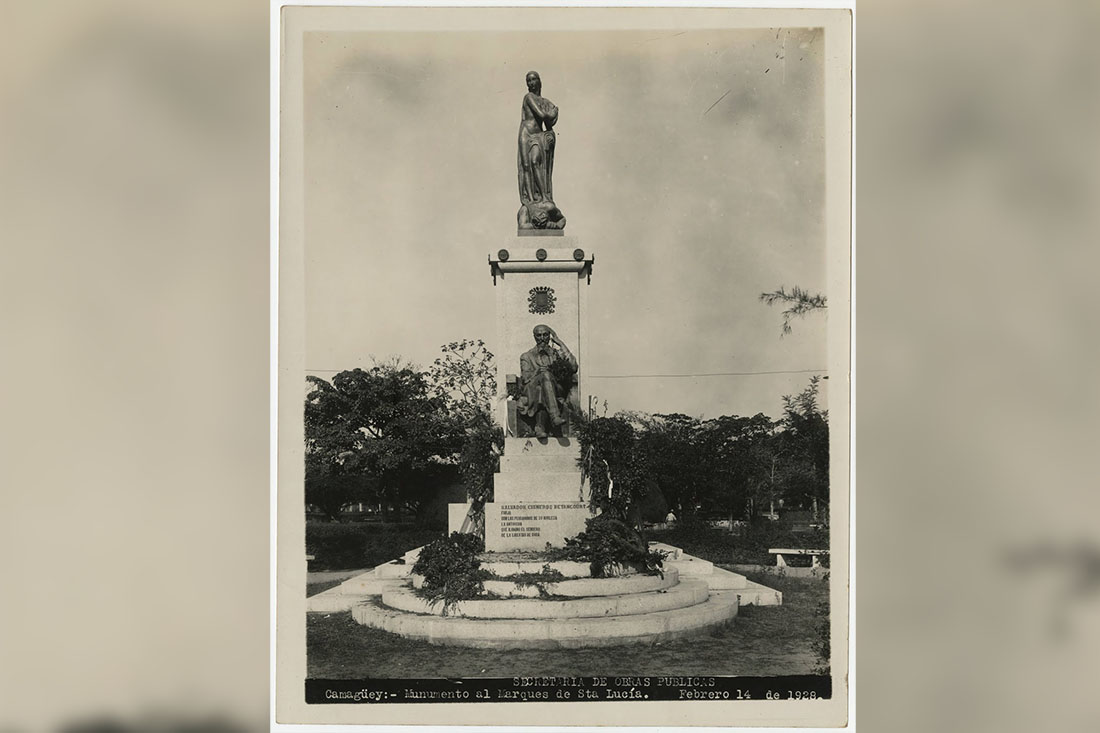On February 10th, 1828, Salvador Escolástico Cisneros Betancourt was born. Only male child. He has lost his mother since he was two years old. In 1841 he is sent to the United States to study. He studied at the Clermont Academy, the Abington School and Louis Academy. In 1846 he returned and began to develop a very large social capital.
His life was linked to the Philharmonic Society, the Friends of the Country Economic Society, as well as the Main Theater and newspapers of the time. He founded a Fire Department and was elected ordinary mayor of the Puerto Príncipe city council on several occasions.
His birthday, an occasion to honor him
Indispensable elements of the Call: “the statue should be in bronze on a marble and granite pedestal, building if possible a park named after him. An international call for artists would be held, widely advertised in the capital through the Cuban Legations to the other countries indicated by the Commission and the unveiling would be on his birthday. A credit of 200 thousand pesos in legal tender is granted.
For the year 1925, close to the centenary of his birth, in a meeting at the City Hall, the Municipal Mayor presented a document written by the Ministry of Public Works, on where the sculpture would finally be located, a work that would be erected under the protection of a Law of the Congress of the Republic. The majority agreed that it should be in Las Mercedes Square due to its proximity to the house where he was born. Only one person Agustín Tomé considered El Casino as the ideal space for the bronze image of the champion.
Unveiling of the statue of the Marquis, on its centenary
The public was already there before the indicated time, from 2:00 in the afternoon, an hour before, the space was packed: Gonzalo de Quesada Park (El Casino). A white cloth covered the image, only part of its limbs peeked out to satisfy the curiosity of the impatient.
Girls from different schools in Camagüey, dressed in snowy colors, sang patriotic hymns according to the program. Managed by Mr. Tomás Vélez Vázquez, President of the Board of Education in Camagüey, who together with Rafael Zayas Bazán, Provincial Superintendent of Schools, Ángel Terradas, Secretary of Superation, among other directors of the different levels of education, marked the opening of the event. The act continued in charge of the Municipal Band followed by the Military Band, which endowed the space with an envelope designed for the moment with allegorical themes to the Homeland.
The silence captivated the attendees when General President Gerardo Machado and his companions climbed to the base of the monument. The mambises from Camagüey were also by his side: Lieutenants of the Liberation Army Honorio Herrera, Crescencio de Varona and Alberto Morales Casalís, Captain José del Carmen Varona, due to illness could not attend. At exactly two past three, the President pulled the strings of the white tunic and in full view of everyone, the dazzling bronze color began a turning point in the aesthetic panorama of the most spacious urban park on the Island.
At the end of the ceremony, popular cheers were heard moved by the exquisiteness of the unveiling act and above all by the fascination of the great work.
Sculptural ensemble
The seated statue of Cisneros needed two tons of bronze to cast the whole, in the Chiurazzi workshops, in the city of Rome. It rests on a pink granite pedestal with a stepped platform and on the right side the author carved his name: A. Dazzi. His full name was Arturo Dazzi, born in Carrara, Italy in 1881 and died in 1966 in that same country. Thirty-three boxes arrived at the Havana port on June 26th, 1926.
The composition was outlined in a balanced way, structured in a dynamic between the vertical and the rest of the horizontal lines. Everything included within an apparent equilateral triangle, around a central objective, with bilateral symmetries.
A profuse symbology
The symbology of it, fidelity: loyalty, courage, promptness, victory with blood… justifies its great status. Other signs appear on the sides in high relief, such as mourning elements: extinguished torches and laurel wreaths, the latter in bronze.
The sculptural ensemble, as a general plan, is a majestic work in all orders, in terms of mastery of techniques, the choice of style and dimensions in consideration of the space in which the work was finally destined.
Bibliography
El Camagüeyano Newspaper 1918-1928.
Translated by: Aileen Álvarez García






